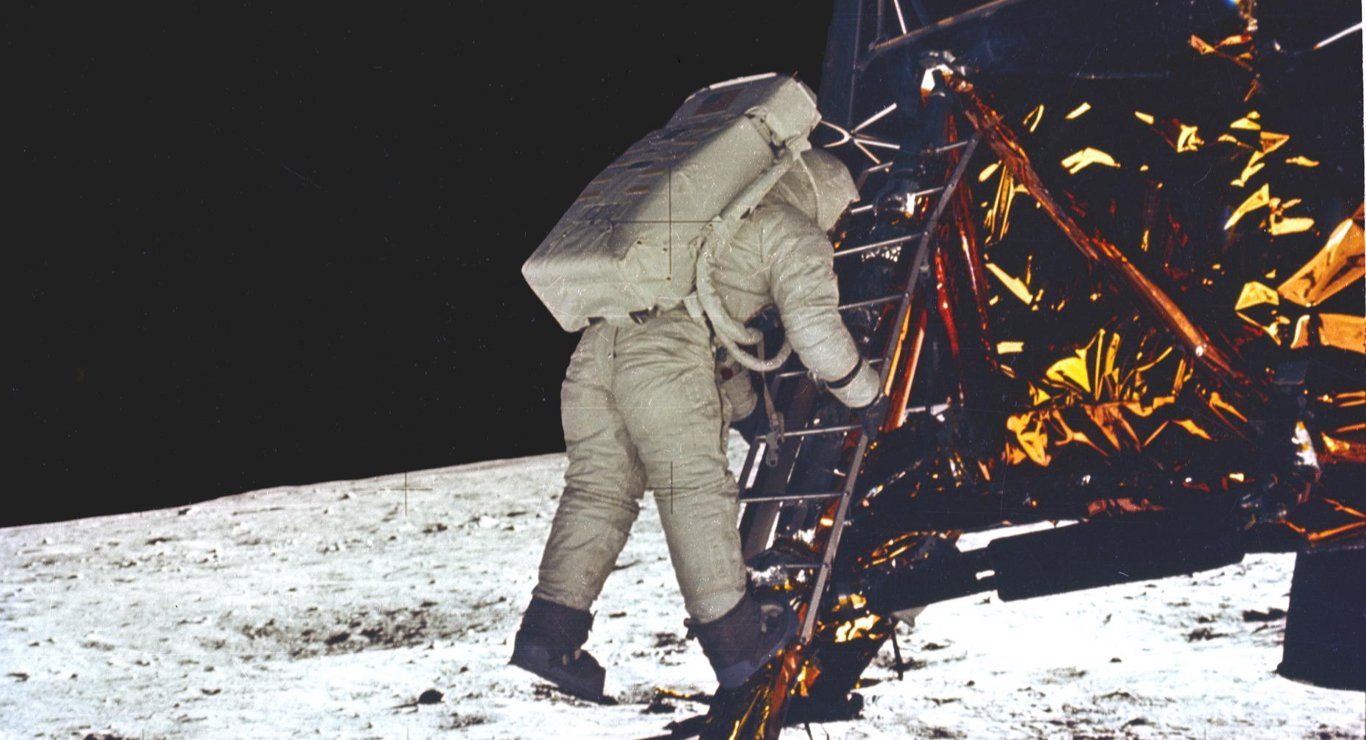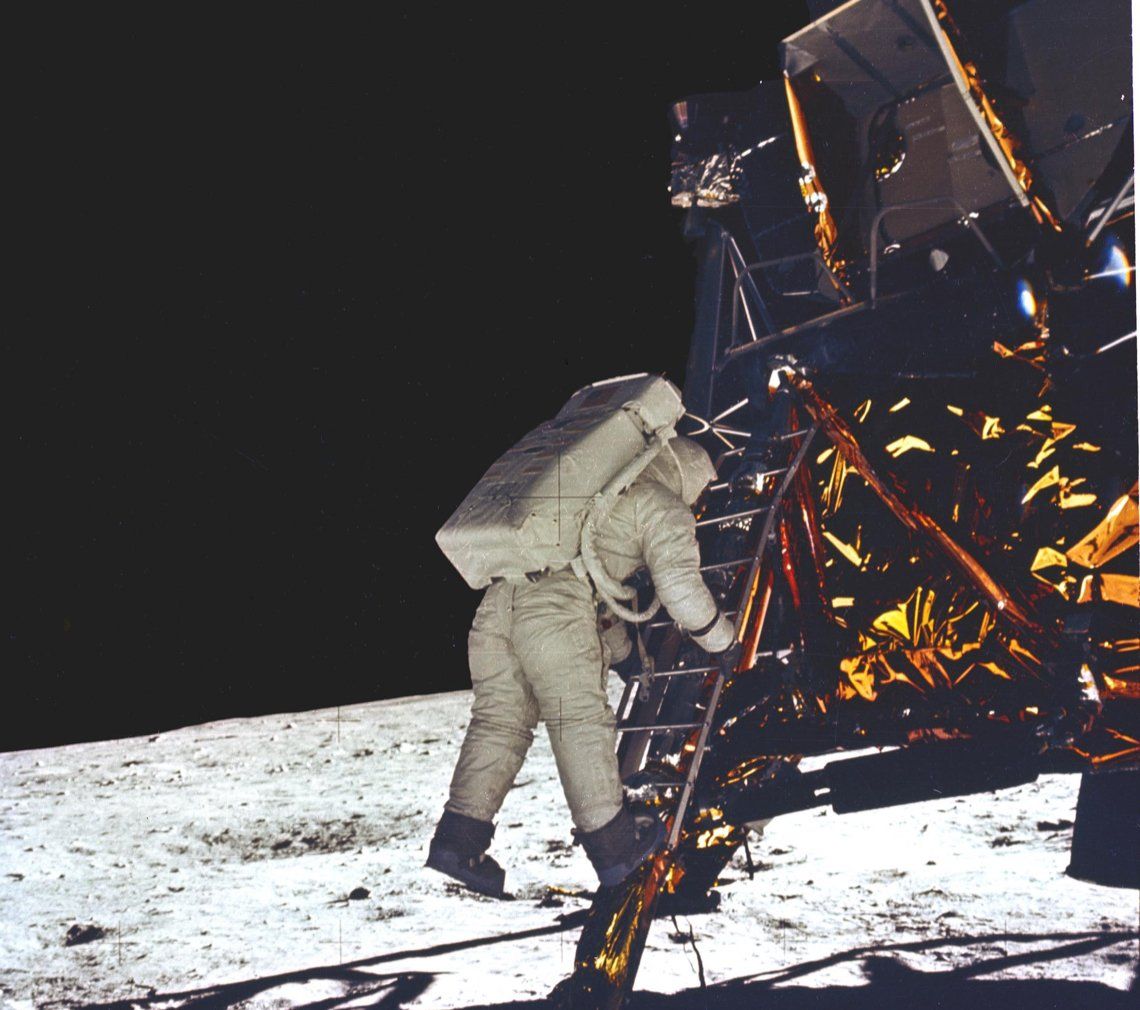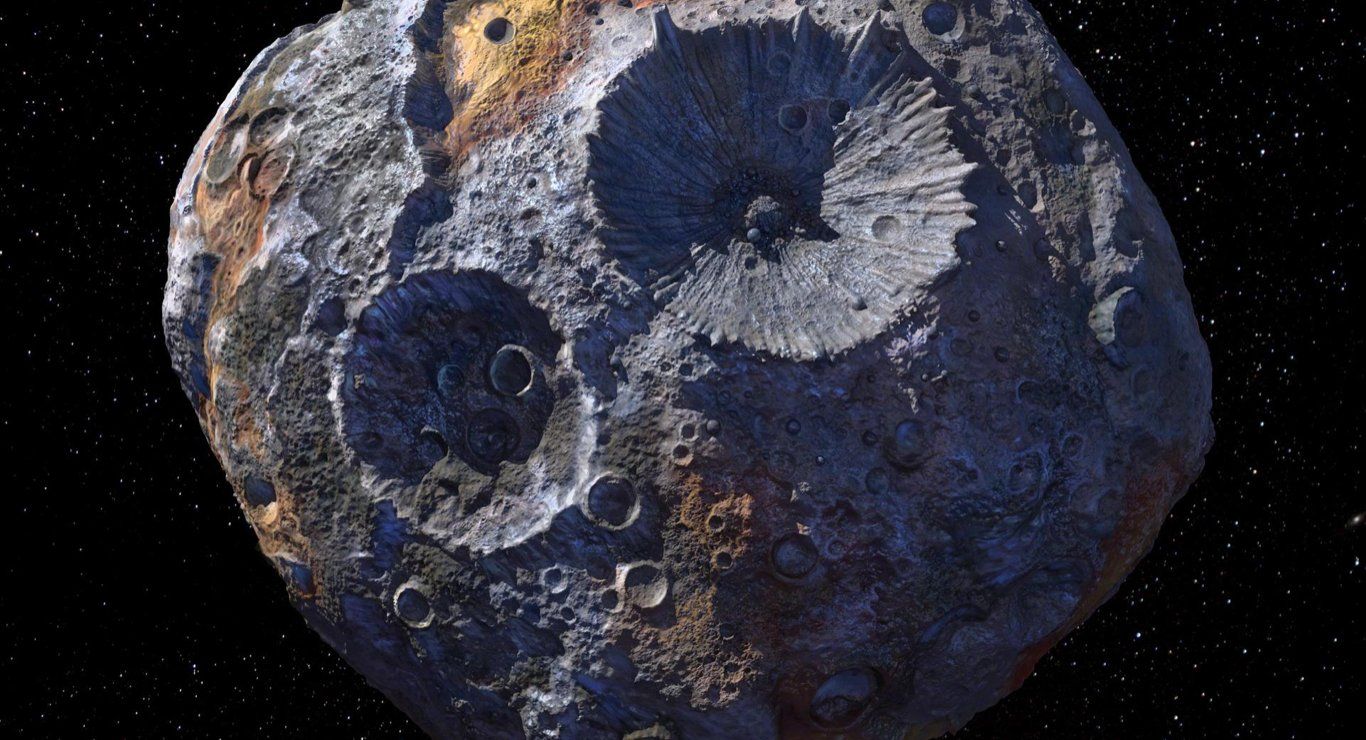31 Oct- 4 Nov 2022
Establishing rules must match pace of innovation in the new space economy

New and updated rules needed to govern lunar exploration (Image: NASA)
The new space economy continues to take shape at a rapid pace, spurred on by increasing efficiency created in the private sector. However, we can not assume that success in space is inevitable. Space as we currently use it, in Earth-orbit, and soon on the lunar surface, is not infinite. Yet the pace of innovation means that competition for use of these areas is increasing, and debate surrounds how these finite resources in space can be managed safely. For humankind to maintain peaceful and fair use of space, a new regulatory framework is needed.
This week we have witnessed the pace of innovation, bringing us ever-closer to our goals. There is growing demand for responsive launch technology, allowing nations to access Earth-orbit in much shorter timeframes. Furthermore, demand for satellite technology is increasing, partially spurred on by the unravelling geopolitical conflict between the US and its allies, China and Russia. Eyes are also firmly set on the Moon, as Artemis and iSpace prepare for their maiden voyages this month. It’s also still possible we could see the first orbital launch of Starship this year as well.
It’s nothing short of incredible in what technological innovation has achieved recent years, months and weeks. Once distant goals of returning humans to the moon and establishing lunar stations, are now so close. However, as more value is placed on resources in space, and competition increases, who will build the framework that ensures space is governed fairly and peacefully for all?
Demand in Earth-orbit is skyrocketing
SpaceX successfully launched their Falcon Heavy rocket this week, carrying secretive US military payloads. Both of the first-stage boosters successfully landed, symbolically demonstrating the reusable technology that has opened up the new space economy. Rocket Lab are on course to launch their Electron rocket again, on the 4th November, and will again attempt to capture their first stage booster using a helicopter, after a partial success on their previous try. In addition, UK launch company, Orbex, have been given permission to construct a new launch site in Scotland, adding to the growing list of companies providing launch services into orbit.
NASA have released more details of their Towed-Glider Air Launch System (TGALS), a project involving tugging a rocket-equipped glider and releasing it around 12km altitude. The glider will then, using a small rocket, climb further and release the payload to continue its journey into orbit. They claim this type of launch could be used operated from any airport that’s designed to be used by small business jets, which could provide a remarkably flexible responsive launch option for the US and its allies.
Similarly, the US has signed an agreement with Luxembourg to establish space cooperation within NATO, within an agreement headed GCC SATCOM SP. Participants of the agreement would gain access to a range of services, including satellite comms. Virgin orbit also recently signed an MOU with Luxembourg to provide responsive launches from the country, highlighting the importance being placed on responsive technology for defence purposes.
Lockheed Martin have announced that they have increased their stake in satellite manufacturer Terran Orbital, investing $100 million into smallsat production, meeting increasing demand. Arianespace will also partner with Australian space tug startup, Space Machines Company (SMC), and French OTV company Exotrail with work with German launch providers Isar Aerospace, for missions between 2024 and 2029. Space tugs and orbital transfer vehicles (OTVs) are seen as a critical part of space exploration, with companies such as SMC developing tugs for in-orbit services, transportation into outer space and for in-orbit refuelling.
Demand for satellites is increasing, not only for Earth observation and defence capabilities, but in order to further humankind’s deep space exploration.

Psyche mission back on for 2023 (Image: NASA/JPL-Caltech/ASU)
Heading for the moon and beyond
The groundwork is being laid for lunar exploration, and NASA’s CAPSTONE mission earlier this year was milestone achievement. In the coming weeks, it will arrive in cislunar orbit, paving the way for the future lunar gateway. Following on from CAPSTONE, NASA is preparing for its Lunar Flashlight mission, sending a satellite into lunar orbit in order to shine lasers into lunar craters, searching for water beneath the surface.
Discovery and use of resources such as water, is key for ongoing space exploration, and agencies are preparing to send their latest generation of rovers in order to explore further. As part of the iSpace lander mission this month, payloads will include the UAE Rashid rover, and JAXA’s miniature, two-wheeled rover. Also, as part Astrobotic’s maiden mission next year, Mexico will send their swarm of small rovers, which will work together autonomously to explore the lunar surface.
The importance of water on the moon cannot be understated. As well as being used to sustain life for extended periods on the moon, water and lunar soil is seen essential to produce rocket fuel, to return vehicles back to Earth, and for deeper space exploration. This week, it was announced that Chinese scientists have achieved just that, in creating fuel from lunar regolith that was retrieved as part of their Chang’e 5 mission.
The road to space is being built, from launch startups to building relay stations orbit, and using the moon as a launchpad for deer space exploration. From here, humankind will be looking towards Mars and beyond. The ESA have announced that their recent software update to its Mars Express spacecraft will now allow it look into the surface of Martian moon, Phobos. Further to this, JAXA will launch a sample-return mission to the small moon in 2024.
Perhaps more inspiringly, the famed NASA Psyche mission is back on track, due to set off to the metal-rich asteroid in October, 2023. Reports of this mission made the news rounds often over the past year, claiming the asteroid contained “$10 quintillion” worth of resources. The mission will help us to better understand the truth behind this statement, but it is nonetheless, symbolic of humankind’s long-term ambitions in space.

UN space laws out of date for the new space age (Image: Unsplash)
Where will new leadership come from, in order to build a truly peaceful, cooperative future?
The technology that is needed to achieve our long-term goals in outer space is arriving. This is maybe even more remarkable considering the current economic slowdown, and maybe space could be the answer for nations looking for new growth opportunities. However, this pace of innovation is by far outpacing rule-making. The Outer Space Treaty of 1967 established a framework for space nations, but is now outdated and doesn’t cover the new and influential private sector.
New rules will be needed, but ones that are universally accepted, in order to avoid (as it’s often referred to as) a “wild west” in outer space. As agencies and the private sector open up new opportunities in space, it also increases competition for limited amount of slots in Earth-orbit, and landing sites on the moon. However, finding transparent leadership that will be needed to build this new regulatory framework will be no simple task, especially considering current geopolitical disputes.
An article from the Brookings Institute this week highlighted this urgency, suggesting that US leadership could be the way forwards. The US are the leading space nation, and are persuading nations to sign-up to their framework under the Artemis Accords, based on principles of the OST. More nations are also signing-up to their ban an ASAT testing. However, it doesn’t seem likely, in the current and foreseeable climate, that nations such as China or Russia would be keen to join a US-led project. China are reaching out to nations for open cooperative projects on their new Tiangong space station, and perhaps “leadership through cooperation” could harness a new and constructive international relations. But again, it seems improbable that the US and many other adversaries would be willing to allow China to take the lead, and are already putting up barriers to technology sharing, such as the US Wolf Amendment, which prohibits NASA from using public money to cooperate with the Chinese state.
Maybe the new and powerful private sector could hold the key. They have the benefit, in many instances, of being able to work around restrictive government policies such as the Wolf Amendment, and could use this influence to lobby for a new and peaceful framework, which would after all, give the business the confidence and stability needed to prosper. However, how could we be sure that companies wouldn’t only forward the issues which affect their profitability? In addition, the article from the Brookings Institute makes a valid point that commercialisation could “…catalyze regional organizations that fragment the world into separate and imperfectly coordinated regulatory regimes.”
The world may need to forge a new path, and establish new models of leadership, that takes into account all the stakeholders and perspectives in a rapidly growing new economy. One that sees spacefaring nations lead by example, a private sector that uses its influence for good, and allows for emerging space nations and all humankind to benefit from our future in space.
External Links
This Week
*News articles posted here are not property of ANASDA GmbH and belong to their respected owners. Postings here are external links only.
Our future in space

New and updated rules needed to govern lunar exploration (Image: NASA)
31 Oct - 4 November 2022
Establishing rules must match pace of innovation in the new space economy
The new space economy continues to take shape at a rapid pace, spurred on by increasing efficiency created in the private sector. However, we can not assume that success in space is inevitable. Space as we currently use it, in Earth-orbit, and soon on the lunar surface, is not infinite. Yet the pace of innovation means that competition for use of these areas is increasing, and debate surrounds how these finite resources in space can be managed safely. For humankind to maintain peaceful and fair use of space, a new regulatory framework is needed.
This week we have witnessed the pace of innovation, bringing us ever-closer to our goals. There is growing demand for responsive launch technology, allowing nations to access Earth-orbit in much shorter timeframes. Furthermore, demand for satellite technology is increasing, partially spurred on by the unravelling geopolitical conflict between the US and its allies, China and Russia. Eyes are also firmly set on the Moon, as Artemis and iSpace prepare for their maiden voyages this month. It’s also still possible we could see the first orbital launch of Starship this year as well.
It’s nothing short of incredible in what technological innovation has achieved recent years, months and weeks. Once distant goals of returning humans to the moon and establishing lunar stations, are now so close. However, as more value is placed on resources in space, and competition increases, who will build the framework that ensures space is governed fairly and peacefully for all?
Demand in Earth-orbit is skyrocketing
SpaceX successfully launched their Falcon Heavy rocket this week, carrying secretive US military payloads. Both of the first-stage boosters successfully landed, symbolically demonstrating the reusable technology that has opened up the new space economy. Rocket Lab are on course to launch their Electron rocket again, on the 4th November, and will again attempt to capture their first stage booster using a helicopter, after a partial success on their previous try. In addition, UK launch company, Orbex, have been given permission to construct a new launch site in Scotland, adding to the growing list of companies providing launch services into orbit.
NASA have released more details of their Towed-Glider Air Launch System (TGALS), a project involving tugging a rocket-equipped glider and releasing it around 12km altitude. The glider will then, using a small rocket, climb further and release the payload to continue its journey into orbit. They claim this type of launch could be used operated from any airport that’s designed to be used by small business jets, which could provide a remarkably flexible responsive launch option for the US and its allies.
Similarly, the US has signed an agreement with Luxembourg to establish space cooperation within NATO, within an agreement headed GCC SATCOM SP. Participants of the agreement would gain access to a range of services, including satellite comms. Virgin orbit also recently signed an MOU with Luxembourg to provide responsive launches from the country, highlighting the importance being placed on responsive technology for defence purposes.
Lockheed Martin have announced that they have increased their stake in satellite manufacturer Terran Orbital, investing $100 million into smallsat production, meeting increasing demand. Arianespace will also partner with Australian space tug startup, Space Machines Company (SMC), and French OTV company Exotrail with work with German launch providers Isar Aerospace, for missions between 2024 and 2029. Space tugs and orbital transfer vehicles (OTVs) are seen as a critical part of space exploration, with companies such as SMC developing tugs for in-orbit services, transportation into outer space and for in-orbit refuelling.
Demand for satellites is increasing, not only for Earth observation and defence capabilities, but in order to further humankind’s deep space exploration.

Psyche mission back on for 2023 (Image: NASA/JPL-Caltech/ASU)
Heading for the moon and beyond
The groundwork is being laid for lunar exploration, and NASA’s CAPSTONE mission earlier this year was milestone achievement. In the coming weeks, it will arrive in cislunar orbit, paving the way for the future lunar gateway. Following on from CAPSTONE, NASA is preparing for its Lunar Flashlight mission, sending a satellite into lunar orbit in order to shine lasers into lunar craters, searching for water beneath the surface.
Discovery and use of resources such as water, is key for ongoing space exploration, and agencies are preparing to send their latest generation of rovers in order to explore further. As part of the iSpace lander mission this month, payloads will include the UAE Rashid rover, and JAXA’s miniature, two-wheeled rover. Also, as part Astrobotic’s maiden mission next year, Mexico will send their swarm of small rovers, which will work together autonomously to explore the lunar surface.
The importance of water on the moon cannot be understated. As well as being used to sustain life for extended periods on the moon, water and lunar soil is seen essential to produce rocket fuel, to return vehicles back to Earth, and for deeper space exploration. This week, it was announced that Chinese scientists have achieved just that, in creating fuel from lunar regolith that was retrieved as part of their Chang’e 5 mission.
The road to space is being built, from launch startups to building relay stations orbit, and using the moon as a launchpad for deer space exploration. From here, humankind will be looking towards Mars and beyond. The ESA have announced that their recent software update to its Mars Express spacecraft will now allow it look into the surface of Martian moon, Phobos. Further to this, JAXA will launch a sample-return mission to the small moon in 2024.
Perhaps more inspiringly, the famed NASA Psyche mission is back on track, due to set off to the metal-rich asteroid in October, 2023. Reports of this mission made the news rounds often over the past year, claiming the asteroid contained “$10 quintillion” worth of resources. The mission will help us to better understand the truth behind this statement, but it is nonetheless, symbolic of humankind’s long-term ambitions in space.

UN space laws out of date for the new space age (Image: Unsplash)
Where will new leadership come from, in order to build a truly peaceful, cooperative future?
The technology that is needed to achieve our long-term goals in outer space is arriving. This is maybe even more remarkable considering the current economic slowdown, and maybe space could be the answer for nations looking for new growth opportunities. However, this pace of innovation is by far outpacing rule-making. The Outer Space Treaty of 1967 established a framework for space nations, but is now outdated and doesn’t cover the new and influential private sector.
New rules will be needed, but ones that are universally accepted, in order to avoid (as it’s often referred to as) a “wild west” in outer space. As agencies and the private sector open up new opportunities in space, it also increases competition for limited amount of slots in Earth-orbit, and landing sites on the moon. However, finding transparent leadership that will be needed to build this new regulatory framework will be no simple task, especially considering current geopolitical disputes.
An article from the Brookings Institute this week highlighted this urgency, suggesting that US leadership could be the way forwards. The US are the leading space nation, and are persuading nations to sign-up to their framework under the Artemis Accords, based on principles of the OST. More nations are also signing-up to their ban an ASAT testing. However, it doesn’t seem likely, in the current and foreseeable climate, that nations such as China or Russia would be keen to join a US-led project. China are reaching out to nations for open cooperative projects on their new Tiangong space station, and perhaps “leadership through cooperation” could harness a new and constructive international relations. But again, it seems improbable that the US and many other adversaries would be willing to allow China to take the lead, and are already putting up barriers to technology sharing, such as the US Wolf Amendment, which prohibits NASA from using public money to cooperate with the Chinese state.
Maybe the new and powerful private sector could hold the key. They have the benefit, in many instances, of being able to work around restrictive government policies such as the Wolf Amendment, and could use this influence to lobby for a new and peaceful framework, which would after all, give the business the confidence and stability needed to prosper. However, how could we be sure that companies wouldn’t only forward the issues which affect their profitability? In addition, the article from the Brookings Institute makes a valid point that commercialisation could “…catalyze regional organizations that fragment the world into separate and imperfectly coordinated regulatory regimes.”
The world may need to forge a new path, and establish new models of leadership, that takes into account all the stakeholders and perspectives in a rapidly growing new economy. One that sees spacefaring nations lead by example, a private sector that uses its influence for good, and allows for emerging space nations and all humankind to benefit from our future in space.
Share this article
External Links
This Week
*News articles posted here are not property of ANASDA GmbH and belong to their respected owners. Postings here are external links only.
31 Oct - 4 Nov 2022
Establishing rules must match pace of innovation in the new space economy

New and updated rules needed to govern lunar exploration (Image: NASA)
The new space economy continues to take shape at a rapid pace, spurred on by increasing efficiency created in the private sector. However, we can not assume that success in space is inevitable. Space as we currently use it, in Earth-orbit, and soon on the lunar surface, is not infinite. Yet the pace of innovation means that competition for use of these areas is increasing, and debate surrounds how these finite resources in space can be managed safely. For humankind to maintain peaceful and fair use of space, a new regulatory framework is needed.
This week we have witnessed the pace of innovation, bringing us ever-closer to our goals. There is growing demand for responsive launch technology, allowing nations to access Earth-orbit in much shorter timeframes. Furthermore, demand for satellite technology is increasing, partially spurred on by the unravelling geopolitical conflict between the US and its allies, China and Russia. Eyes are also firmly set on the Moon, as Artemis and iSpace prepare for their maiden voyages this month. It’s also still possible we could see the first orbital launch of Starship this year as well.
It’s nothing short of incredible in what technological innovation has achieved recent years, months and weeks. Once distant goals of returning humans to the moon and establishing lunar stations, are now so close. However, as more value is placed on resources in space, and competition increases, who will build the framework that ensures space is governed fairly and peacefully for all?
Demand in Earth-orbit is skyrocketing
SpaceX successfully launched their Falcon Heavy rocket this week, carrying secretive US military payloads. Both of the first-stage boosters successfully landed, symbolically demonstrating the reusable technology that has opened up the new space economy. Rocket Lab are on course to launch their Electron rocket again, on the 4th November, and will again attempt to capture their first stage booster using a helicopter, after a partial success on their previous try. In addition, UK launch company, Orbex, have been given permission to construct a new launch site in Scotland, adding to the growing list of companies providing launch services into orbit.
NASA have released more details of their Towed-Glider Air Launch System (TGALS), a project involving tugging a rocket-equipped glider and releasing it around 12km altitude. The glider will then, using a small rocket, climb further and release the payload to continue its journey into orbit. They claim this type of launch could be used operated from any airport that’s designed to be used by small business jets, which could provide a remarkably flexible responsive launch option for the US and its allies.
Similarly, the US has signed an agreement with Luxembourg to establish space cooperation within NATO, within an agreement headed GCC SATCOM SP. Participants of the agreement would gain access to a range of services, including satellite comms. Virgin orbit also recently signed an MOU with Luxembourg to provide responsive launches from the country, highlighting the importance being placed on responsive technology for defence purposes.
Lockheed Martin have announced that they have increased their stake in satellite manufacturer Terran Orbital, investing $100 million into smallsat production, meeting increasing demand. Arianespace will also partner with Australian space tug startup, Space Machines Company (SMC), and French OTV company Exotrail with work with German launch providers Isar Aerospace, for missions between 2024 and 2029. Space tugs and orbital transfer vehicles (OTVs) are seen as a critical part of space exploration, with companies such as SMC developing tugs for in-orbit services, transportation into outer space and for in-orbit refuelling.
Demand for satellites is increasing, not only for Earth observation and defence capabilities, but in order to further humankind’s deep space exploration.

NASA's Psyche mission back on for 2023 (Image: NASA/JPL-Caltech/ASU)
Heading for the moon and beyond
The groundwork is being laid for lunar exploration, and NASA’s CAPSTONE mission earlier this year was milestone achievement. In the coming weeks, it will arrive in cislunar orbit, paving the way for the future lunar gateway. Following on from CAPSTONE, NASA is preparing for its Lunar Flashlight mission, sending a satellite into lunar orbit in order to shine lasers into lunar craters, searching for water beneath the surface.
Discovery and use of resources such as water, is key for ongoing space exploration, and agencies are preparing to send their latest generation of rovers in order to explore further. As part of the iSpace lander mission this month, payloads will include the UAE Rashid rover, and JAXA’s miniature, two-wheeled rover. Also, as part Astrobotic’s maiden mission next year, Mexico will send their swarm of small rovers, which will work together autonomously to explore the lunar surface.
The importance of water on the moon cannot be understated. As well as being used to sustain life for extended periods on the moon, water and lunar soil is seen essential to produce rocket fuel, to return vehicles back to Earth, and for deeper space exploration. This week, it was announced that Chinese scientists have achieved just that, in creating fuel from lunar regolith that was retrieved as part of their Chang’e 5 mission.
The road to space is being built, from launch startups to building relay stations orbit, and using the moon as a launchpad for deer space exploration. From here, humankind will be looking towards Mars and beyond. The ESA have announced that their recent software update to its Mars Express spacecraft will now allow it look into the surface of Martian moon, Phobos. Further to this, JAXA will launch a sample-return mission to the small moon in 2024.
Perhaps more inspiringly, the famed NASA Psyche mission is back on track, due to set off to the metal-rich asteroid in October, 2023. Reports of this mission made the news rounds often over the past year, claiming the asteroid contained “$10 quintillion” worth of resources. The mission will help us to better understand the truth behind this statement, but it is nonetheless, symbolic of humankind’s long-term ambitions in space.

UN space laws out of date for the new space age (Image: Unsplash)
Where will new leadership come from, in order to build a truly peaceful, cooperative future?
The technology that is needed to achieve our long-term goals in outer space is arriving. This is maybe even more remarkable considering the current economic slowdown, and maybe space could be the answer for nations looking for new growth opportunities. However, this pace of innovation is by far outpacing rule-making. The Outer Space Treaty of 1967 established a framework for space nations, but is now outdated and doesn’t cover the new and influential private sector.
New rules will be needed, but ones that are universally accepted, in order to avoid (as it’s often referred to as) a “wild west” in outer space. As agencies and the private sector open up new opportunities in space, it also increases competition for limited amount of slots in Earth-orbit, and landing sites on the moon. However, finding transparent leadership that will be needed to build this new regulatory framework will be no simple task, especially considering current geopolitical disputes.
An article from the Brookings Institute this week highlighted this urgency, suggesting that US leadership could be the way forwards. The US are the leading space nation, and are persuading nations to sign-up to their framework under the Artemis Accords, based on principles of the OST. More nations are also signing-up to their ban an ASAT testing. However, it doesn’t seem likely, in the current and foreseeable climate, that nations such as China or Russia would be keen to join a US-led project. China are reaching out to nations for open cooperative projects on their new Tiangong space station, and perhaps “leadership through cooperation” could harness a new and constructive international relations. But again, it seems improbable that the US and many other adversaries would be willing to allow China to take the lead, and are already putting up barriers to technology sharing, such as the US Wolf Amendment, which prohibits NASA from using public money to cooperate with the Chinese state.
Maybe the new and powerful private sector could hold the key. They have the benefit, in many instances, of being able to work around restrictive government policies such as the Wolf Amendment, and could use this influence to lobby for a new and peaceful framework, which would after all, give the business the confidence and stability needed to prosper. However, how could we be sure that companies wouldn’t only forward the issues which affect their profitability? In addition, the article from the Brookings Institute makes a valid point that commercialisation could “…catalyze regional organizations that fragment the world into separate and imperfectly coordinated regulatory regimes.”
The world may need to forge a new path, and establish new models of leadership, that takes into account all the stakeholders and perspectives in a rapidly growing new economy. One that sees spacefaring nations lead by example, a private sector that uses its influence for good, and allows for emerging space nations and all humankind to benefit from our future in space.
Share this article
External Links
This Week
*News articles posted here are not property of ANASDA GmbH and belong to their respected owners. Postings here are external links only.

























